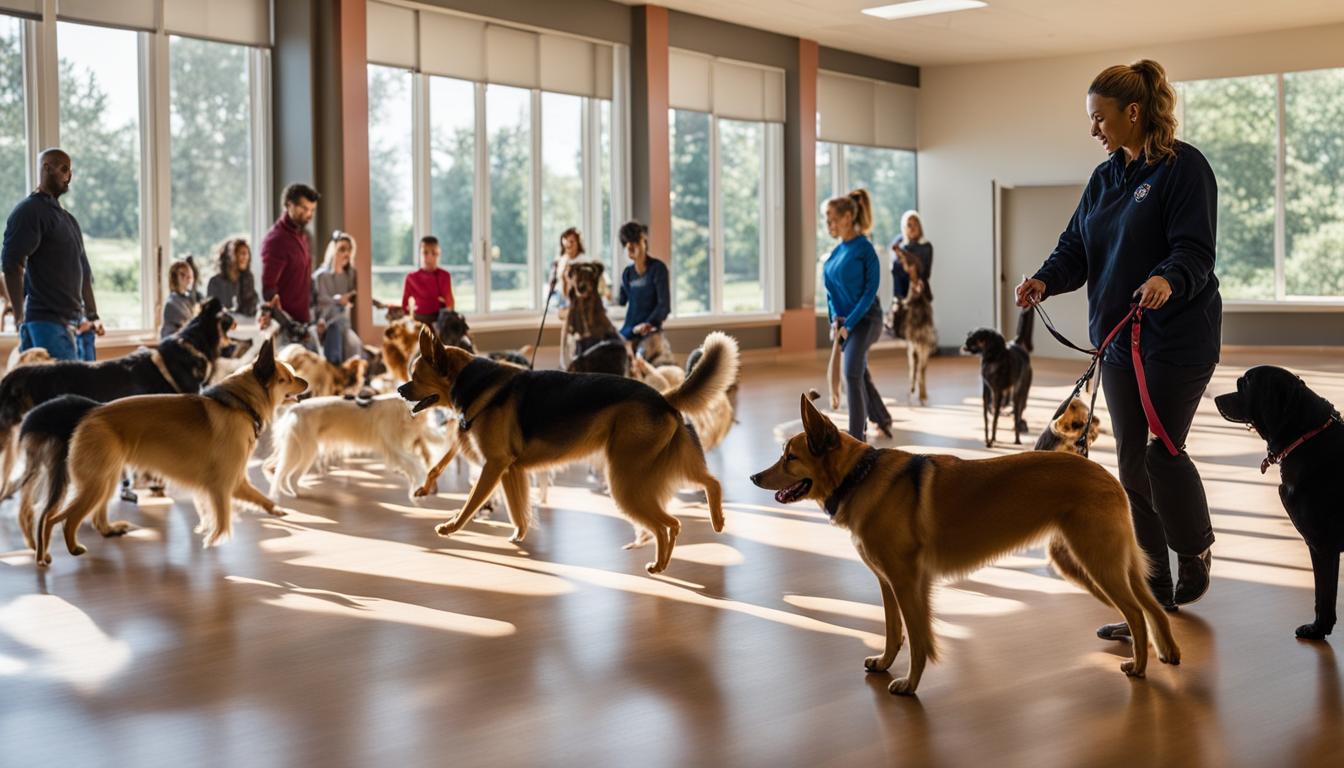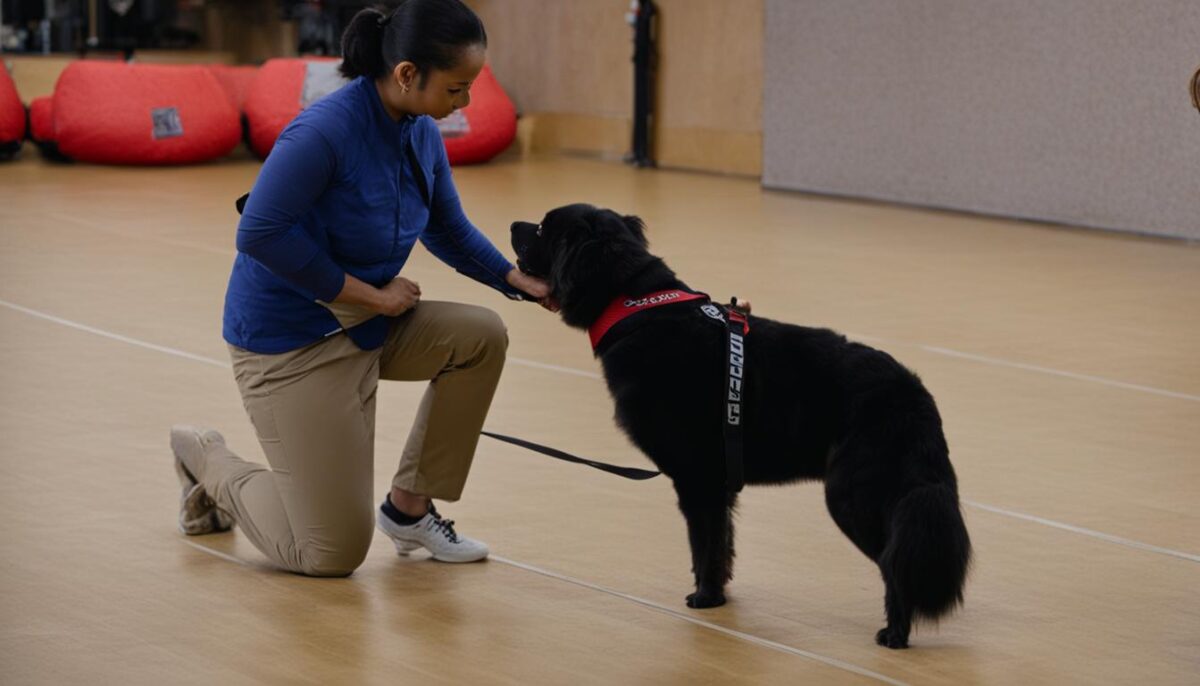Have you ever wanted your furry friend to help people feel better? With the right therapy dog training, your dog could bring joy to folks in hospitals, schools, and more. Imagine your pup being a furry hero that gives cuddles and smiles to those who need it most!
Therapy dogs aren’t the same as service dogs or emotional support animals. They need to learn special skills to be great at their job. These skills will help people feel relaxed, less anxious, and just plain happy. To get started, your dog will need therapy dog certification. This says they are ready to spread love and joy to everyone they meet.
Learning about the benefits of therapy dogs is exciting. They make hearts warm, smiles wide, and days brighter. Let’s explore how your loyal companion can become a therapy dog and share their love with the world!
First, consider if your dog loves being around people and can listen well to commands. They should be grown up enough—usually at least one year old. These are just a few things your dog needs to start their journey to becoming a therapy dog.
Key Takeaways
- Your dog can be trained to be a comfort for others.
- A therapy dog needs to pass training to get a certificate.
- They provide love and lower stress for people they meet.
- Dogs must be friendly, calm, and good at following commands.
- Being a therapy dog also makes your furry friend happy.
The Healing Paws: What Makes a Good Therapy Dog?
Finding a furry friend with the heart to help others can be a journey full of rewards. If you are considering training your dog to be a helper with healing paws, understanding the essential traits and requirements for a good therapy dog is key.
Understanding the Distinct Role of Therapy Dogs
Therapy dogs are special canines that offer comfort and joy to those in need, spreading their love in hospitals, schools, and many other places. They are not the same as service dogs or emotional support animals, because therapy dogs are trained to interact with many people.
Evaluating Your Dog’s Temperament and Social Skills
One of the significant therapy dog criteria is a gentle and stable dog temperament. Your doggy pal should be friendly, easygoing, and patient, enjoying attention not only from you but from strangers as well. They should not be quick to jump up or become overexcited. A test, such as the Canine Good Citizen program, can assess these social skills before they begin as a therapy dog.
The Importance of Age and Obedience in Therapy Dogs
Age matters when it comes to therapy dogs. Dogs usually need to be at least one year old to handle the responsibility. They should have a solid grasp of basic commands like sit, stay, and come. These commands are part of responsible dog ownership and are also important in therapy environments where control and obedience are essential.
Health and Grooming Standards for a Therapy Dog
Your dog’s health is of utmost importance, not just for them but for the people they’ll be visiting. Regular vet check-ups and therapy dog health requirements are necessary to ensure they are in tiptop health. Regular grooming and good hygiene are also crucial to keeping your dog clean and approachable for therapeutic interactions.
Helping your dog to get started on this beautiful therapy journey means understanding these key elements. A dog with a calm demeanor and a big heart can make a world of difference in someone’s life. So, consider these criteria and see if your furry friend has what it takes to deliver healing paws to those in need.
How to Train My Dog to Be a Therapy Dog
Want to teach your dog to help people and make them happy? You can train them to be a therapy dog! This means they can visit folks at places like hospitals and schools to cheer them up. Let’s learn the steps to make your doggy a super therapy helper.
First off, it’s all about making friends. Your dog will need to be cool meeting new people and seeing new places. This is where they learn not to be shy or scared. They also have to know how to listen to you when you tell them what to do.
Next, your furry friend might need to pass a special test called the AKC Canine Good Citizen test. It’s like a big gold star saying they are one of the best-behaved dogs around! They have to show they can be calm and do things like sit and stay, even when there’s lots of stuff going on around them.
Now, it’s time for some class! You and your pooch can join therapy dog classes. In class, you learn all sorts of things just for therapy dogs. Like not jumping up on people, even if they’re really excited, and listening super well to commands.
- Learn to sit quietly – even when someone is hugging or petting your dog.
- Walk nicely through a crowd – your dog can’t say “excuse me,” but they sure can learn how to move through people without bumping into them.
- Stay calm with loud noises – sometimes places are noisy. Your dog can learn these sounds are okay.
When you’ve both learned a bunch, there’s a test. It’s to see if your dog is ready to go on real-life visits. And guess what? You get to go with them too. That’s because you’re a team! You’ll use positive reinforcement in dog training. This means giving your dog a treat or a pat on the head when they do something really good.
Keep practicing all the time. This will help make your dog the best therapy dog they can be. You can look at videos or learn from people who have therapy dogs too. That way, if classes are tough on your wallet, you can still learn lots at home.
Are you ready to start? Go on and have fun with your dog while you train them to be a hero to someone in need!
Conclusion
Having a therapy dog isn’t just nice for the people you help; it’s also great for you and your furry friend. You both become part of a caring community, spreading joy and easing worries for those who need it most. Working together, you’ll learn how to bring smiles and comfort to places where people are facing tough times. Those happy feelings? Well, they go both ways! Every tail wag and gentle nuzzle from your dog not only lightens the mood for others but also fills your day with warmth and purpose.
Remember, becoming a therapy dog team means both you and your dog will need to learn a few things. It might seem like a lot at first, but there are lots of others out there ready to teach you with their own amazing therapy dog handler experiences. Classes and groups can show you the ropes, guiding you through all the steps to make sure you’re both doing your best. And with every new skill your dog learns, you’ll be one step closer to ready for your first visit together.
Once you and your dog are all set, it’s time to get out there and make a difference. Whether it’s making folks feel better in hospitals, helping kids read at schools, or just giving someone time with a friendly pup, you’re sure to see the beautiful benefits of therapy dogs firsthand. So tie your shoelaces, grab the leash, and start this heartwarming adventure with your dog. You’ll be amazed at how much love your four-legged buddy can share!
FAQ
What benefits do therapy dogs provide?
Therapy dogs offer a range of benefits such as lowering blood pressure, reducing anxiety, improving mental health, and bringing joy and comfort to people in various settings like hospitals, schools, and nursing homes.
Can any breed of dog become a therapy dog?
Yes, any breed can become a therapy dog. The most important factors are the dog’s temperament, obedience, health, and whether they genuinely enjoy human interaction.
What are the therapy dog criteria?
The key criteria for therapy dogs include being at least one year old, having a calm and friendly demeanor, passing behavior assessment tests such as the AKC Canine Good Citizen test, being in good health, and meeting specific grooming standards.
How do I start therapy dog training with my pup?
Begin with basic obedience training and socialization. Then, have your dog pass the Canine Good Citizen test and follow up with therapy dog classes for more specialized training. Positive reinforcement is key to successful training.
What is required for therapy dog certification?
To get therapy dog certification, your dog must pass an evaluation that tests their obedience, behavior, and ability to handle various interactions with people. Regular health check-ups and updates on vaccinations are also typically required for certification.
How do I know if my dog has the right temperament for therapy work?
Observe your dog’s reactions in social situations. A good therapy dog is generally calm, non-aggressive, eager to interact with strangers, and does not get overly excited or stressed in new environments.
Are there different types of therapy dog programs?
Yes, there are several types of therapy dog programs, some geared towards specific environments like schools, hospitals, and assisted living facilities, while others may focus on certain populations such as children or veterans.
How can I find therapy dog training classes near me?
You can search for local therapy dog organizations, ask your veterinarian for recommendations, or look for classes through national organizations such as the American Kennel Club (AKC).
What is the Canine Good Citizen test?
The Canine Good Citizen test is a program by the AKC that evaluates dogs on obedience and good manners. Passing this test is often a prerequisite for entering therapy dog training programs.
Can therapy dogs help with learning in schools?
Yes, therapy dogs can help create a more engaging learning environment, reduce stress among students, and assist with reading programs and other educational activities.
As a therapy dog handler, what should I be prepared for during visits?
As a handler, you should be prepared to guide your dog through various interactions, manage your dog’s behavior, ensure the comfort of those you are visiting, and always be attentive to hygiene and safety.
How often do therapy dogs need to be groomed?
Grooming frequency may vary depending on the breed, but therapy dogs should always be clean and well-groomed before each visit to ensure the comfort and safety of the people they meet.

